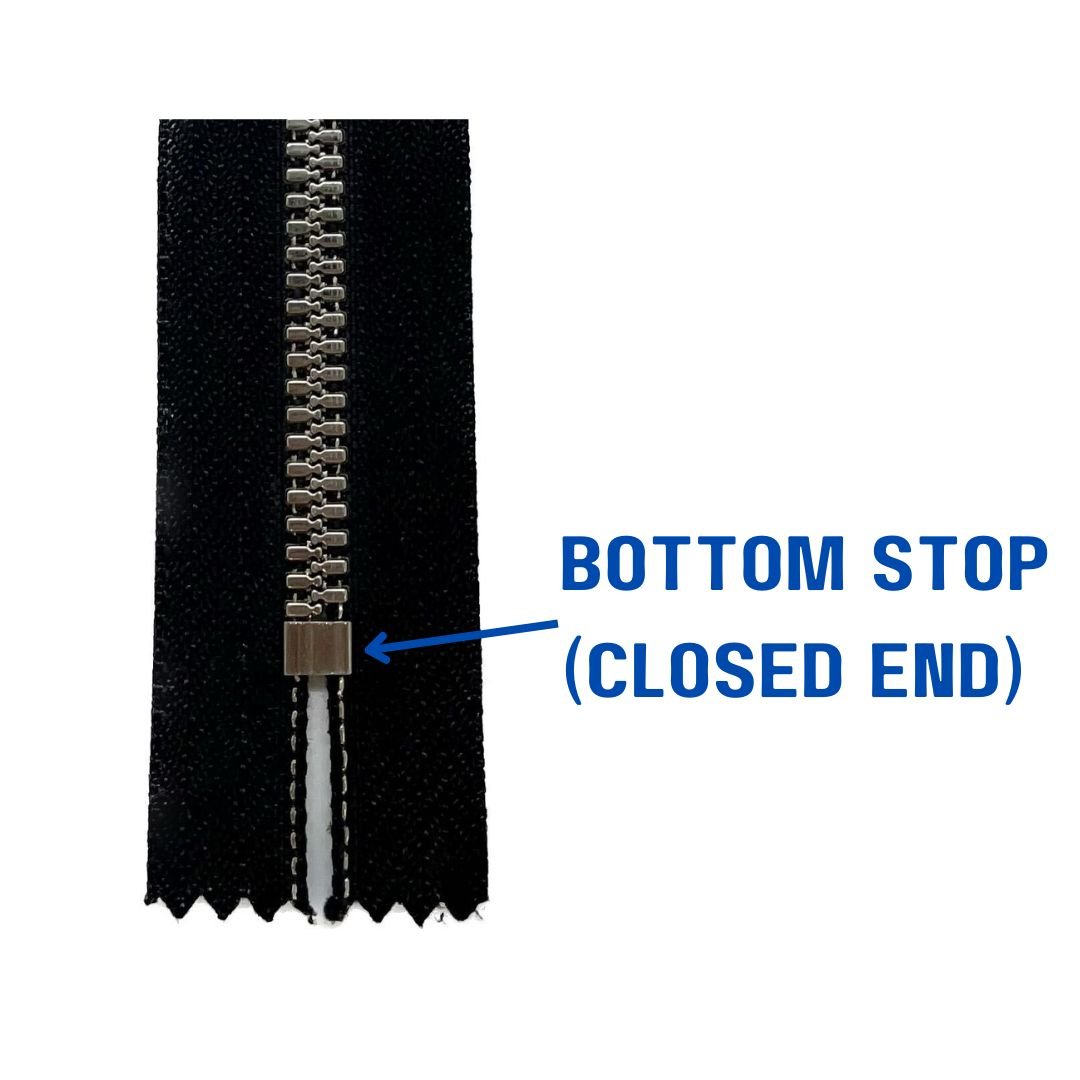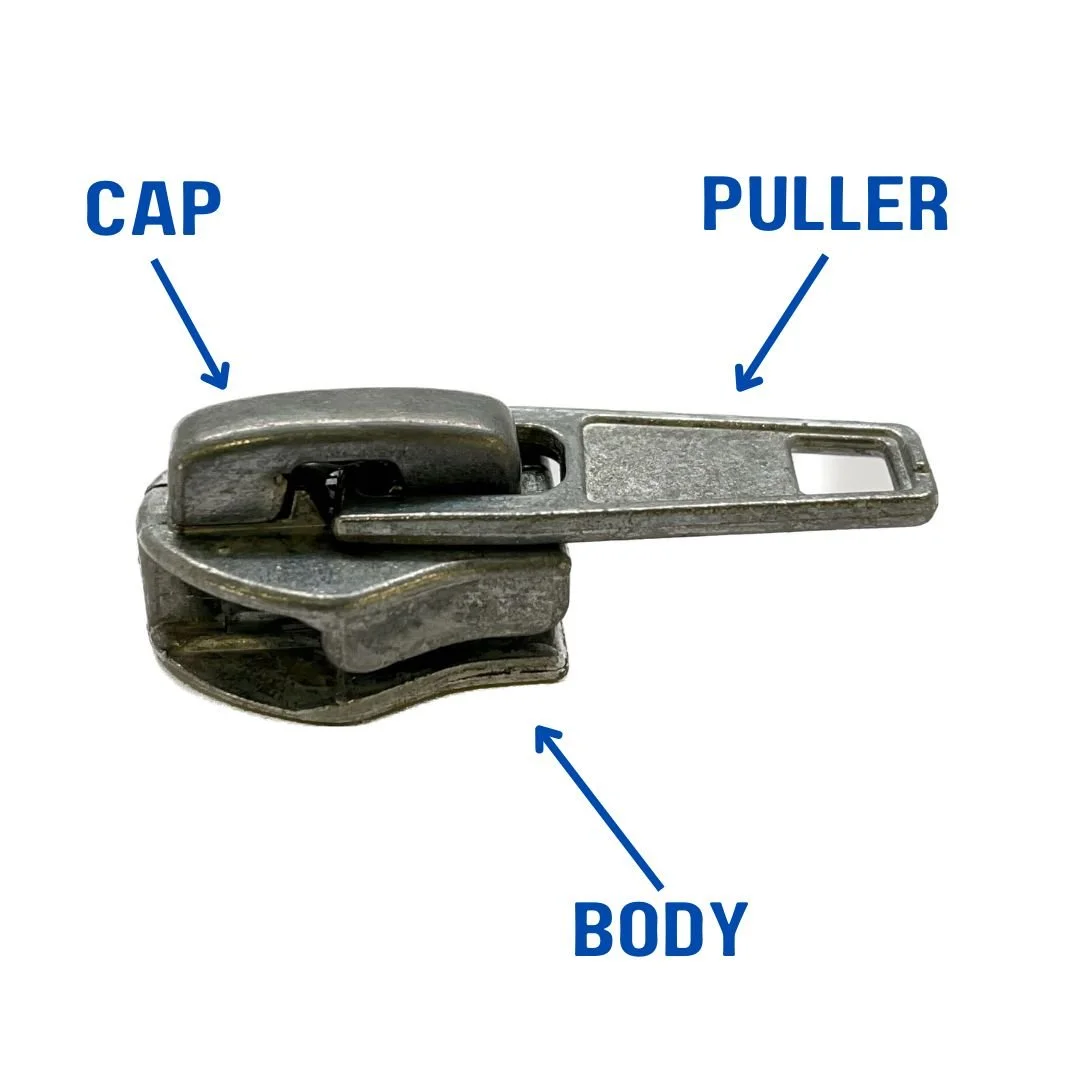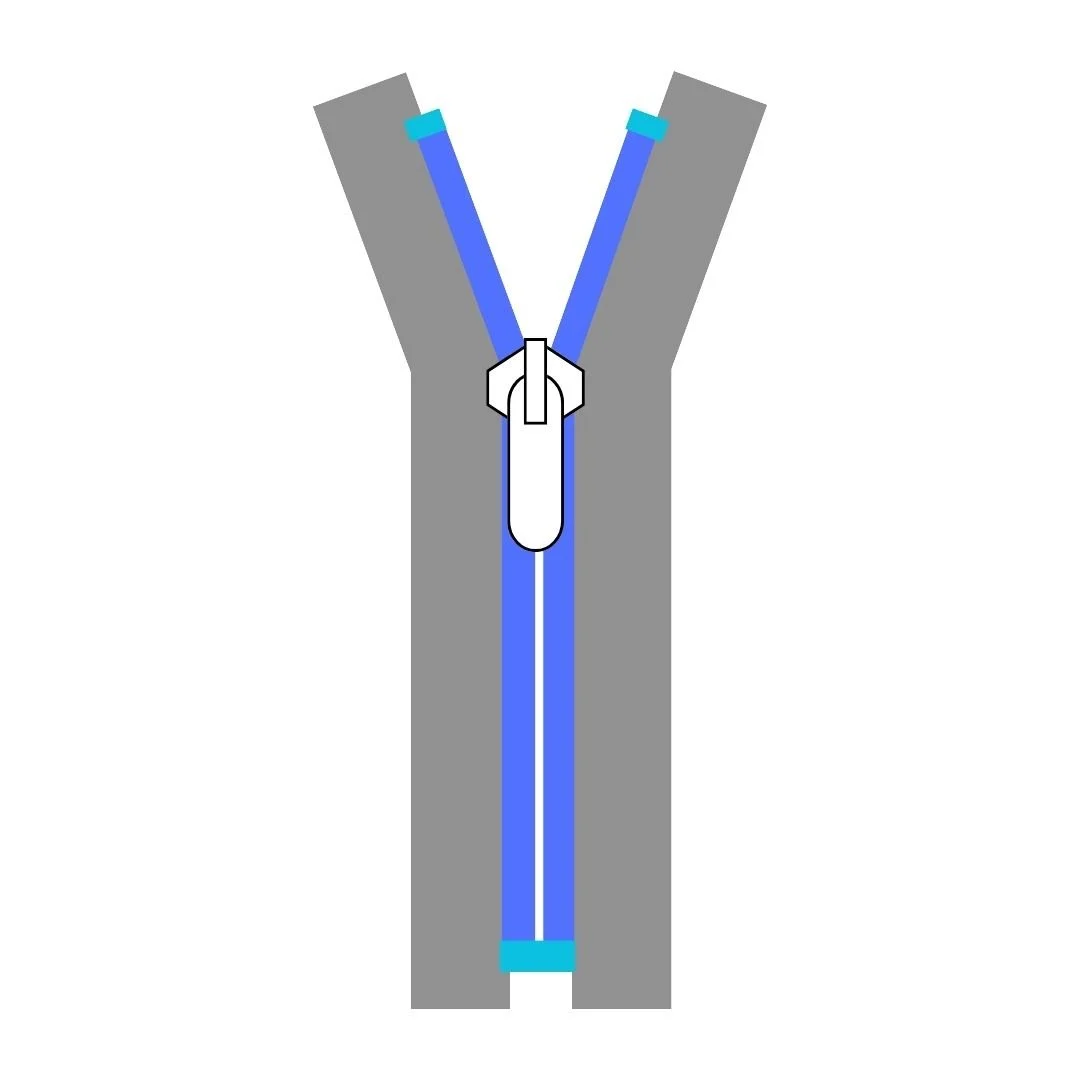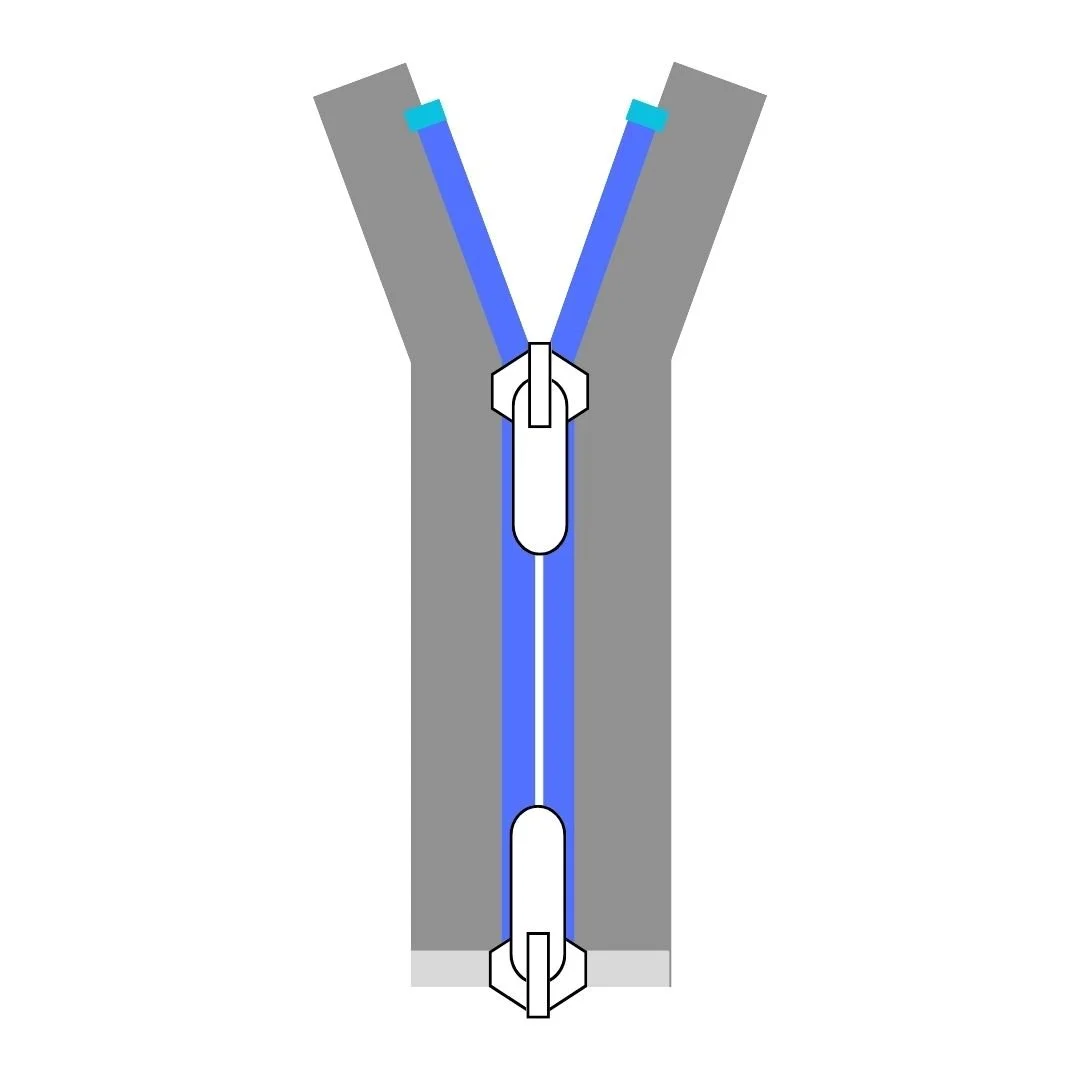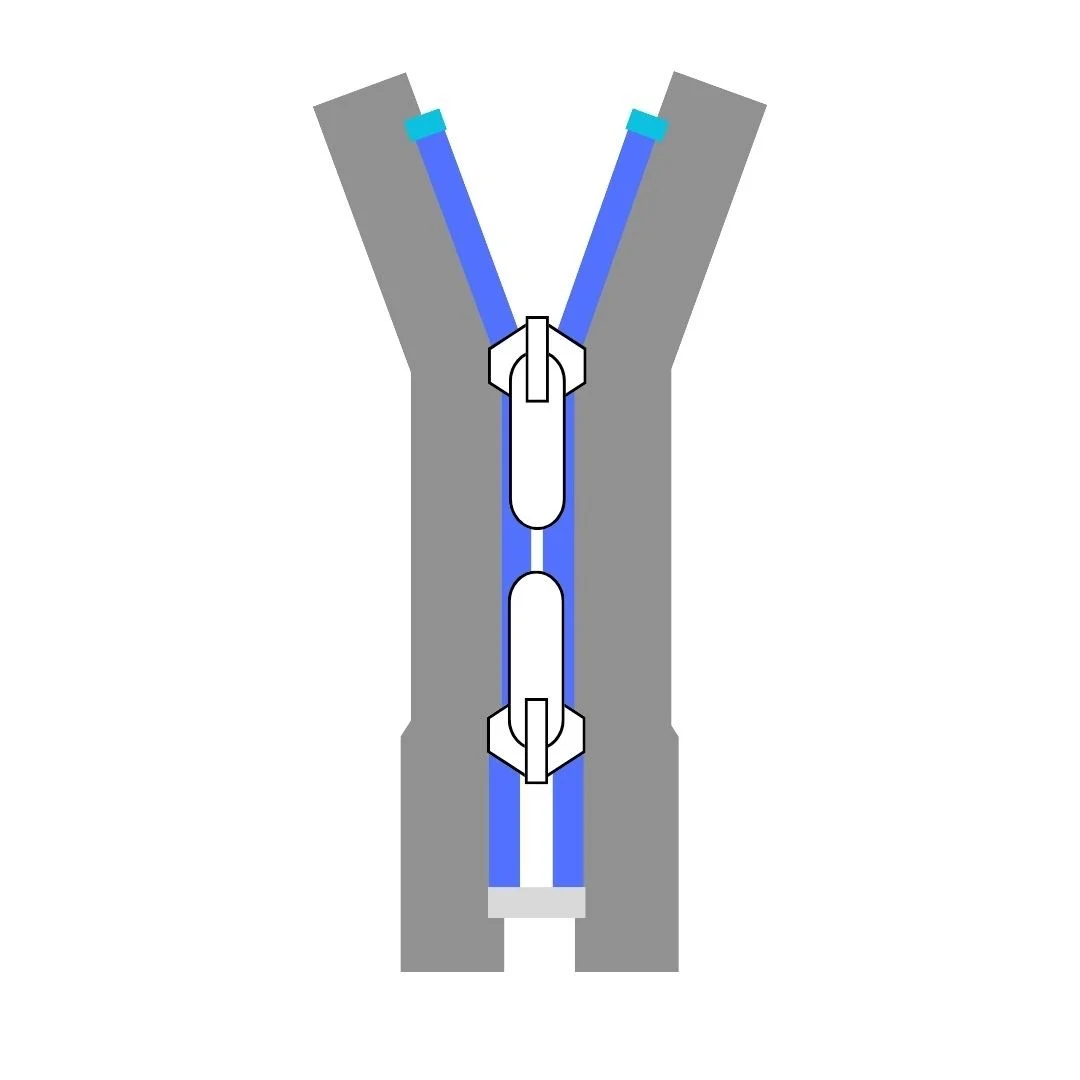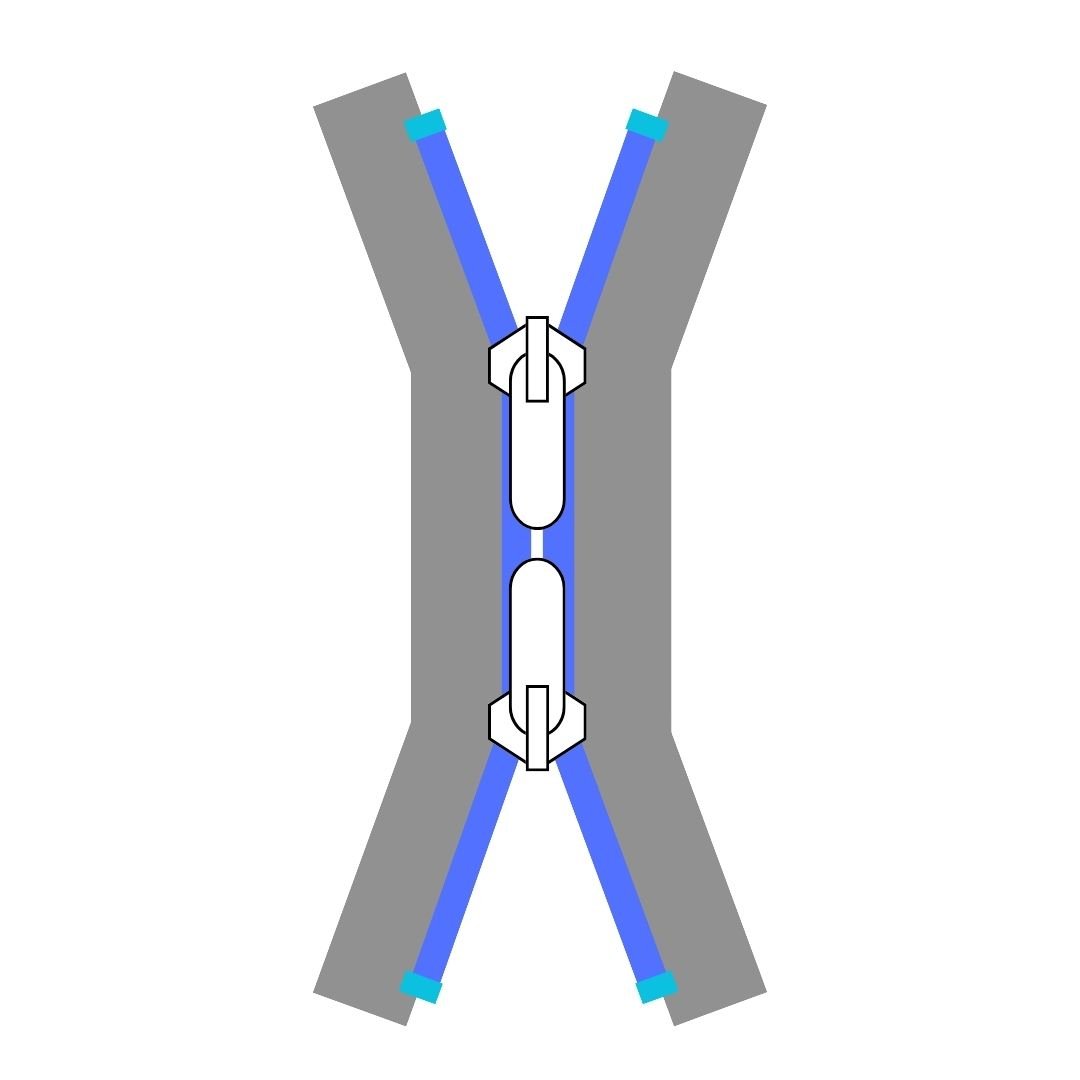Structure of Zipper & Slider
Our production line is based in China Fujian where we manufacture all kinds of zipper products. One of which is Finished Zipper which comprises of four main components: 1) slider, 2) tape, 3) teeth and 4) elements (pin, box, etc. )
The tape, teeth and slider of a zipper can be made from different materials:
Nylon - Most coil zippers use nylon tape that is flexible but strong. Nylon teeth are also smooth and resilient.
Polyester - Polyester zipper tape are strong and resists fading and abrasion.
Brass - Brass makes excellent sliders and zipper teeth due to its corrosion resistance and attractive look. It's used for premium clothing and bags.
Aluminum - An affordable alternative to brass, aluminum is lightweight and durable for zipper parts.
Steel - Strong but lightweight steel teeth are rust resistant and suitable for outdoor and rugged use.
Zippers are essential closures used in a wide variety of products and industries. With many types and materials available, it's important to understand the options to select the right zipper. This guide provides an overview of common zipper types, materials, and applications.
Zipper Types:
There are a few main categories of zippers defined by their design:
Coil Zippers - Also called spiral zippers, these have two interlocking coils made of polyester or nylon. Coil zippers are flexible and durable. They are commonly used in garments, bags, shoes and more.
Metal Zippers - These heavy duty zippers have teeth made from brass, aluminum or steel. The metal teeth mesh together to create a strong closure. Metal zippers are found on jeans, luggage, leather goods, outdoor gear and industrial uses.
Plastic Zippers - Plastic zipper teeth can be made from nylon, polyacetal or polyethylene. They are lightweight and easy to open but less durable than metal teeth. Plastic zippers are used on cheaper bags, pencil cases, boxers and lightweight jackets.
Invisible Zippers - These have synthetic or metallic teeth that blend into the fabric. Invisible zippers create a seamless closure used in dresses, skirts, and high-end garments.
Types of Functions (Finished Zipper)
Zipper Applications
With the right zipper type and material, zippers can be engineered for countless products:
Clothing - Garments use nylon coil, plastic and invisible zippers. Two-way zippers are practical on jackets. Metal zippers reinforce denim jeans.
Bags - Strong nylon coil zips work well on backpacks and purses. Fashion handbags may use ornate brass or nickel zippers.
Shoes and Accessories - Small nylon zippers secure wallets, cosmetic cases and pencil cases neatly. They also close shoe fronts elegantly.
Furniture and Bedding - Upholstered furniture, mattresses and pillows often hide zippers for easy assembly and removal of covers. Durable plastic or metal teeth stand up to repeated use.
Luggage - For suitcases and duffel bags, metal zippers like aluminum provide robust closures on heavy fabrics.
Outdoor Gear - Backpacks for hiking and camping require waterproof zippers made to flex and seal out the elements.


